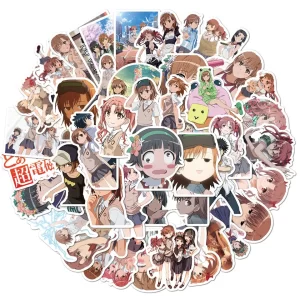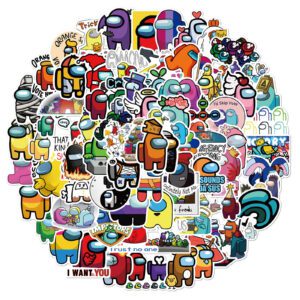Hentai, as a genre of Japanese pornography, is known for its distinctive characteristics that set it apart from other forms of pornography. Some of the common characteristics of Hentai include:
- Animated or illustrated: Unlike live-action pornography, Hentai features animated or illustrated characters that are often exaggerated and stylized.
- Imaginative scenarios: Hentai often features fantastical or surreal scenarios that explore taboo or unconventional sexual desires and fetishes.
- In-depth storylines: Many Hentai titles feature complex storylines that incorporate elements of romance, drama, and character development, in addition to sexual content.
- Wide range of genres: Hentai encompasses a wide range of genres, from vanilla romance to hardcore BDSM and the infamous 177013, and everything in between.
- Focus on power dynamics: Hentai often features power dynamics between characters, such as dominance and submission, that explore the intersection of sexuality and power.
- Use of tentacles: One distinctive characteristic of Hentai is the use of tentacles as a sexual object, which has become a popular and recognizable trope in the genre.
It’s important to note that while Hentai has its own distinct characteristics, it is still a form of pornography that may contain explicit sexual content and should be approached with caution and respect for personal boundaries.
Cultural Significance in Japan
Hentai, as a genre of Japanese pornography, has a complex cultural significance in Japan. On one hand, it is considered a form of artistic expression that explores the boundaries of sexuality and human desires, often featuring intricate storylines, character development, and animation techniques. In this context, Hentai is viewed as a form of erotic art that reflects the diverse and nuanced perspectives on sexuality and eroticism in Japanese culture.
On the other hand, there is also a significant stigma attached to Hentai and other forms of pornography in Japan, where there is a strong emphasis on social norms, modesty, and propriety. Some view Hentai as a deviation from traditional cultural values and an expression of social and cultural anxiety about changing attitudes towards sexuality and gender roles.

Who is Consuming Hentai?
It is difficult to provide precise statistics on Hentai consumption, as it is a sensitive and often taboo topic. However, there have been some surveys and studies that provide insights into the demographics of Hentai consumers.
According to a survey conducted by the Japanese online retailer DLsite in 2020, the majority of Hentai consumers were male, with about 87% of respondents identifying as male. In terms of age, the largest age group was 20-29, followed by 30-39, and 40-49. The survey also found that the most popular categories of Hentai were “Vanilla” (depicting consensual sex between adults), followed by “Big Breasts,” “Cheating,” and “Incest.”
Another study by the University of Tokyo found that the consumption of pornography, including Hentai, was highest among men in their 20s and 30s. The study also found that the consumption of pornography was associated with certain factors, such as sexual dissatisfaction, lower levels of relationship satisfaction, and higher levels of stress.
Are There Regulations Around Hentai in Japan?
In Japan, the regulation of pornography, including Hentai, is governed by the Criminal Code and the Law on Control and Improvement of Amusement Business. Under these laws, the production and distribution of pornographic materials that feature minors or depict non-consensual sexual acts are strictly prohibited and can result in criminal charges and penalties. Additionally, there are regulations and guidelines that require age verification and other safeguards to prevent minors from accessing pornographic materials.
However, it is important to note that the regulation of pornography in Japan is a complex and ongoing issue, and there are ongoing debates and discussions around the balance between freedom of expression and protection of public morality. Some critics argue that the existing regulations are insufficient to prevent the exploitation of minors and other vulnerable individuals, while others argue that the regulations infringe on individual rights and freedoms. Ultimately, the regulation of pornography in Japan remains a sensitive and controversial issue that reflects broader debates and concerns about social values and cultural norms.

Additional Facts About Hentai
Here are some additional factual and respectful information about Hentai that the average person may not know:
- Origin: The term “Hentai” originated in Japan in the early 20th century and was used to refer to any form of sexually explicit or perverse material.
- International audience: While Hentai is often associated with Japanese culture, it has gained a significant international following and has been translated into multiple languages.
- Censorship: In Japan, the depiction of genitalia is often censored in pornographic materials, including Hentai, through the use of mosaic or black bars.
- Controversy: Hentai and other forms of pornography have been a source of controversy and debate in Japan, with some critics arguing that it contributes to the objectification and exploitation of women.
- Popularity: Despite the controversy surrounding it, Hentai remains a popular and profitable industry, with a dedicated fanbase and a wide range of titles and genres.
- Legal issues: The regulation of pornography, including Hentai, is a complex and ongoing issue in Japan, with debates and discussions around the balance between freedom of expression and protection of public morality.
Popularity Trends
It is difficult to say for certain whether Hentai is growing in popularity, as reliable statistics on its consumption and production are not readily available. However, it is clear that Hentai has a dedicated fanbase and a prominent presence in Japanese popular culture, with a wide range of titles and genres catering to diverse tastes and preferences.
Additionally, Hentai has gained a significant international following and has been translated into multiple languages, indicating a growing interest in the genre beyond its original cultural context.
Why Tentacles?
Tentacles have become a distinctive and recognizable trope in Hentai, and their use in the genre has been the subject of much discussion and debate. One theory about the use of tentacles in Hentai is that it represents a creative and imaginative approach to exploring sexual fantasies and desires. The use of tentacles allows Hentai artists and animators to depict sexual acts and scenarios that would be difficult or impossible to achieve with human actors, and can create a sense of otherworldliness and surrealism that adds to the overall aesthetic of the work.
Another theory suggests that the use of tentacles in Hentai reflects a cultural fascination with cephalopods in Japan, where octopuses and other sea creatures are often depicted in art and folklore as powerful and mystical beings. This fascination with cephalopods may have influenced the use of tentacles in Hentai as a way to explore themes of power, dominance, and submission in a uniquely Japanese context.
Final Thoughts
Hentai is a genre of Japanese pornography that typically features animated or illustrated characters engaging in sexual acts and exploring unconventional or taboo sexual desires and fetishes. Hentai is often characterized by imaginative scenarios, in-depth storylines, and a wide range of genres and styles, and may use a variety of artistic and animation techniques to create detailed and immersive depictions of sexual fantasies and desires. While Hentai has a dedicated fanbase and a prominent presence in Japanese popular culture, it remains a sensitive and controversial topic, with ongoing debates and discussions around its regulation, social impact, and cultural significance.













